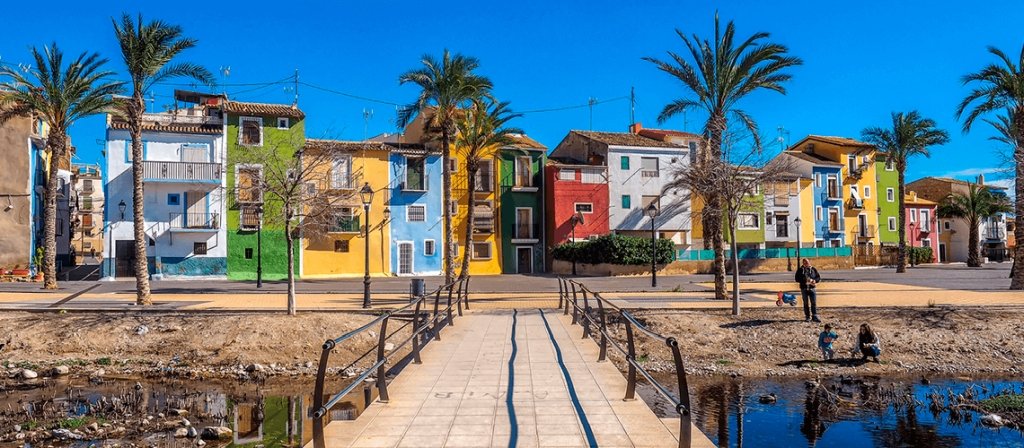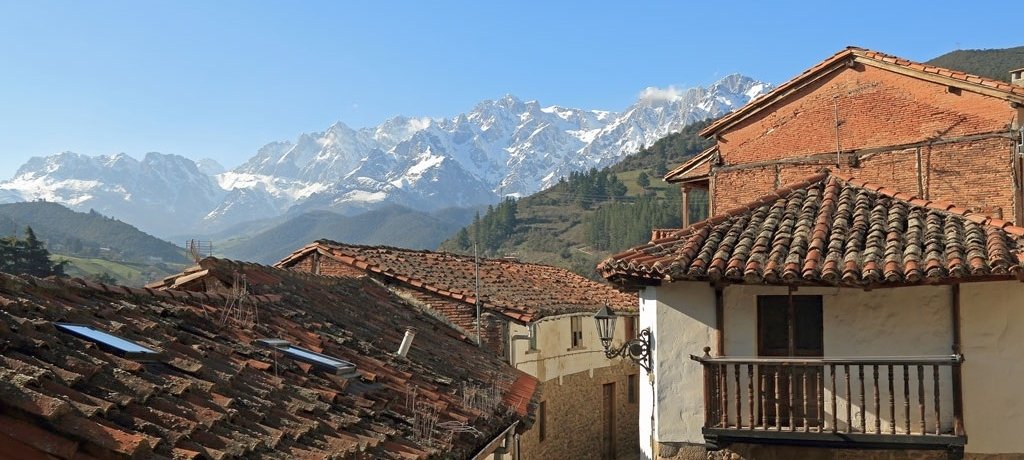Here at Wildside Holidays, we have always focused on Spain’s natural parks, hiking routes, and the unique blend of culture and wildlife that make this country so special. While Spain’s big cities and coastal resorts attract millions of visitors, there are many towns and villages where traditions remain strong and life moves at a gentler pace. These places often sit close to well-known tourist routes yet feel worlds apart, offering travelers the chance to reconnect with nature, discover local history, and enjoy regional gastronomy. From medieval hilltop villages to colorful fishing towns, the following 10 Lesser-Known Places in Spain Worth Exploring showcase a more authentic side of Spain — where landscapes, wildlife, and culture come together.
1. Villajoyosa, Costa Blanca (Province: Alicante)
On the sun-soaked Costa Blanca, Villajoyosa stands out with its vibrant seafront of brightly painted houses, a tradition that once helped fishermen spot their homes from afar. Today, the town is equally known for its sandy beaches and its long history of chocolate-making, with the Valor Chocolate Museum drawing visitors from across the region. Wandering the old town reveals centuries of history, while the waterfront offers a relaxed atmosphere for strolling, dining, and soaking in Mediterranean views. Despite its location between busy Benidorm and Alicante, Villajoyosa feels refreshingly laid-back and authentic.
Find the perfect place to stay in Villajoyosa over at Booking.com.
- Nearest Large City: Alicante (≈35 km)
- Transport: Alicante-Elche Airport, AP-7 motorway, local buses
- Overview: Long beaches, colorful old town, fishing traditions, and chocolate heritage.
- Gastronomy: Valor chocolate, seafood dishes like caldero, tapas bars along the promenade.
- Wildlife & Nature: Coastal seabirds, marine life, hiking in nearby Serra Gelada Natural Park.
- See the full list of Natural Parks in the Valencian Community (Alicante, Castellón and Valencia) here.
2. Potes, Cantabria (Province: Cantabria)
Potes is a medieval town tucked into the dramatic landscape of the Picos de Europa. Its stone bridges, narrow streets, and riverside plazas give it an old-world charm, while the surrounding mountains make it a natural gateway for outdoor adventures. Beyond its scenery, Potes is steeped in tradition, with local crafts, cheeses, and hearty mountain dishes shaping its identity. Travelers come here to hike, explore historic towers, and experience the authentic rhythm of rural Cantabria. In autumn, when the leaves turn gold and red, the entire valley feels like a painting brought to life.
From apartments to country houses and hotels, there are plenty of options for staying in Potes.
- Nearest Large City: Santander (≈95 km)
- Transport: Bilbao Airport (≈140 km), regional buses, mountain roads
- Overview: Medieval town with bridges, towers, and mountain backdrops.
- Gastronomy: Cocido lebaniego (stew), Cantabrian cheeses, local honey.
- Wildlife & Nature: Brown bears, vultures, and chamois in Picos de Europa National Park.
- Read about the Picos de Europa National Park here.
3. Alarcón, Castilla-La Mancha (Province: Cuenca)
Rising above the winding Júcar River, Alarcón is a village shaped by centuries of history. Its fortified walls, medieval castle, and Roman bridge make it feel like a living museum. The town’s quiet streets and stunning viewpoints draw visitors who want to step away from Spain’s busy tourist trail. Surrounded by rugged landscapes, Alarcón also offers opportunities for nature walks, birdwatching, and peaceful riverbank picnics. It’s a destination where architecture and nature complement one another beautifully.
The Parador is a great option for a stay in Alarcón.
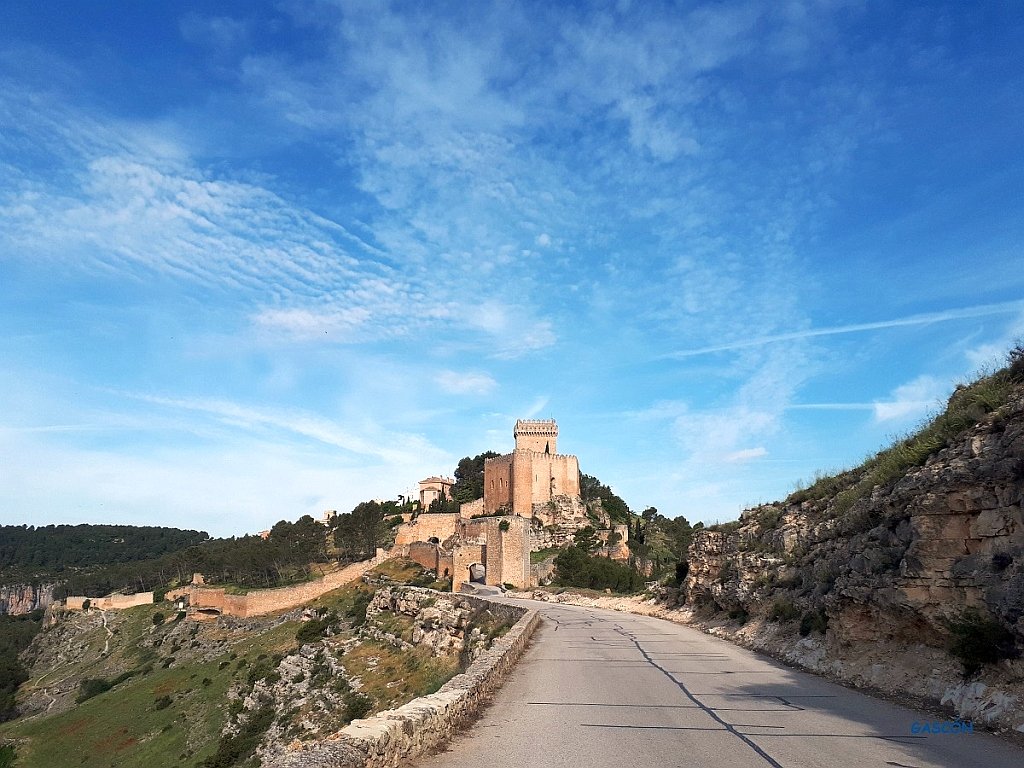
- Nearest Large City: Cuenca (≈50 km)
- Transport: Madrid-Barajas Airport (≈160 km), train to Cuenca + local bus
- Overview: Hilltop town with castle, Roman bridge, defensive walls.
- Gastronomy: Manchego cheese, gazpacho manchego, traditional game dishes.
- Wildlife & Nature: River otters, kingfishers, deer, and wild boar in the surrounding hills.
- The Iberian Highlands rewilding project.
4. Cudillero, Asturias (Province: Asturias)
Intro: Built into a steep hillside overlooking the Cantabrian Sea, Cudillero is one of Asturias’ most striking fishing towns. Its houses, painted in shades of blue, green, and red, seem to tumble down toward the harbor, where fishing boats still bring in the daily catch. Visitors can explore winding streets that lead to spectacular viewpoints, sample cider in traditional sidrerías, and relax with fresh seafood on the waterfront. The town retains a strong maritime identity, offering travelers a genuine taste of coastal life in northern Spain.
Check out the accommodation options in Cudillero over at Booking.com.
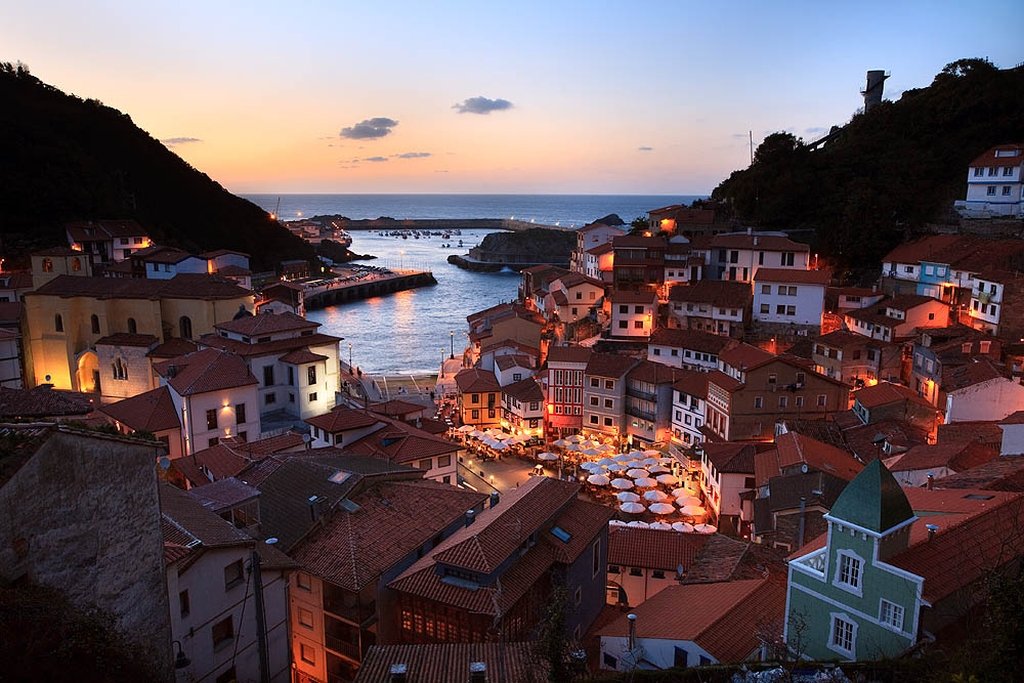
- Nearest Large City: Oviedo (≈90 km)
- Transport: Asturias Airport, road access via AS-32 and AS-238
- Overview: Colorful hillside town, working harbor, cliffside viewpoints.
- Gastronomy: Fabada asturiana (bean stew), fresh fish, Asturian cider.
- Wildlife & Nature: Coastal cliffs with seabird colonies; mountains nearby home to bears, wolves, and chamois.
- Read more about Natural Parks and Wildlife in Asturias here.
5. Peratallada, Catalonia (Province: Girona)
Peratallada is a medieval village where time seems to have stood still. Its cobblestone streets wind between stone houses, arches, and courtyards, all overlooked by a historic castle. The town is small, but its atmosphere is enchanting, making it a favorite for photographers, artists, and travelers looking for a slower pace. Surrounded by fertile fields, olive groves, and vineyards, Peratallada offers the perfect blend of cultural history and rural charm. Seasonal festivals bring music and life to its quiet squares, keeping traditions alive.
Have a look at the country houses and hotels in Peratallada.
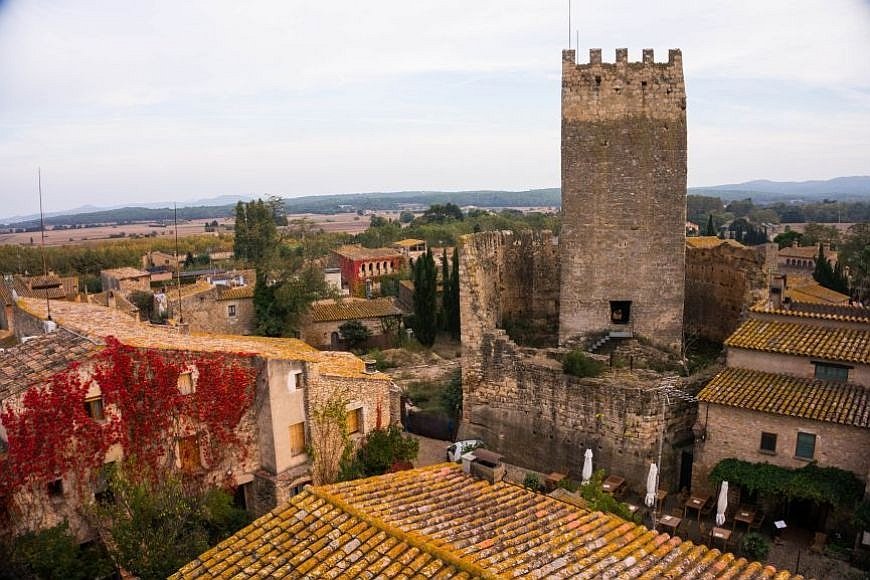
- Nearest Large City: Girona (≈40 km)
- Transport: Girona-Costa Brava Airport, regional buses, road access via GI-633
- Overview: Medieval streets, castle, artisan shops, and plazas.
- Gastronomy: Catalan dishes like pa amb tomàquet, local wines, olive oil-based cooking.
- Wildlife & Nature: Rural landscapes with rabbits, wild boar, and migratory birds.
- See more Natural Parks in Catalonia here.
6. Alcalá del Júcar, Castilla-La Mancha (Province: Albacete)
Set dramatically into the side of a gorge carved by the Júcar River, Alcalá del Júcar is a village unlike any other. Its whitewashed cave houses are built into the cliffs, while a medieval castle overlooks the town from above. Narrow streets twist up and down the hillside, offering glimpses of the river below. Visitors can stay in renovated cave homes, kayak along the river, or explore the region’s caves and hiking trails. It’s a unique destination for those who enjoy both history and adventure.
With over 60 hotels, spas and country houses to stay in over at Booking.com there are plenty of accommodation choices in Alcalá del Júcar

- Nearest Large City: Albacete (≈70 km)
- Transport: Albacete Airport, train to Albacete + bus to Alcalá del Júcar
- Overview: Cliffside village with castle, cave houses, and river views.
- Gastronomy: Freshwater fish dishes, Manchego cheese, local pastries.
- Wildlife & Nature: Otters, herons, and kingfishers along the Júcar River; eagles and foxes in the hills.
- Read more about the natural parks and other places to visit in Castilla La Mancha here.
7. Babia, Castilla y León (Province: León)
Far from Spain’s busy cities, Babia is a region where open skies, rolling hills, and quiet villages create an atmosphere of deep calm. Known locally as a place to “be in the clouds,” Babia has long been a retreat for poets and dreamers. Today, it remains a favorite for hikers and nature lovers who come to explore its trails, valleys, and high pastures. Life here revolves around farming, traditional cuisine, and a strong connection to the natural environment. For travelers, it offers a glimpse of authentic rural Spain.
The town of Astorga is ideal for exploring the babia region. Check out hotels and other options at Booking.com

- Nearest Large City: León (≈100 km)
- Transport: León Airport, regional buses, mountain roads
- Overview: Remote landscapes, traditional villages, hiking trails.
- Gastronomy: Roast lamb, hearty stews, local cheeses, honey.
- Wildlife & Nature: Iberian wolves, deer, vultures, and oak and beech forests.
- Read about the Babia biosphere reserve here.
8. Cazorla, Jaén (Province: Jaén)
At the edge of the Sierra de Cazorla, Segura y Las Villas Natural Park, Cazorla is the gateway to one of Spain’s largest protected areas. Its whitewashed houses climb up a hillside crowned by a medieval castle, while nearby rivers and mountains provide endless opportunities for outdoor activities. Visitors can hike, kayak, or simply enjoy the scenery of waterfalls, olive groves, and forests. The town itself offers a lively mix of local culture, traditional food, and Andalusian charm, making it a perfect base for exploring the natural wonders of Jaén.
I have always stayed in the stunning Parador when visiting Cazorla.

- Nearest Large City: Jaén (≈75 km)
- Transport: Granada Airport (≈140 km), regional buses
- Overview: Whitewashed hillside town, medieval castle, gateway to natural park.
- Gastronomy: Olive oil-rich dishes, wild game, local pastries.
- Wildlife & Nature: Spanish ibex, wild boar, eagles, lynx; trout in mountain rivers.
- Read more about the Sierra de Cazorla, Segura y las Villas here.
9. Lastres, Asturias (Province: Asturias)
Intro: Lastres is a peaceful fishing town perched on the Asturian coast, where whitewashed houses with red-tiled roofs line the hillside. Its cobbled streets and panoramic sea views give it a timeless beauty, while its harbor continues to support the local fishing community. Visitors can stroll through its quiet lanes, enjoy seafood at harbourfront restaurants, and watch the sun set over the Bay of Biscay. The surrounding landscape, with its cliffs and green hills, makes Lastres an ideal stop for travelers seeking a quieter, more contemplative experience.
Lastres has some lovely apartments and country houses to stay in.

- Nearest Large City: Gijón (≈50 km)
- Transport: Asturias Airport, road access
- Overview: Coastal town with cobbled streets, fishing port, panoramic sea views.
- Gastronomy: Fresh fish, seafood stews, cider, Asturian desserts.
- Wildlife & Nature: Seabirds on the cliffs, deer and foxes in nearby forests.
- Read more about Natural Parks and Wildlife in Asturias here.
10. Moraira, Costa Blanca (Province: Alicante)
Intro: Once a small fishing village, Moraira has grown into a charming coastal town that balances traditional character with a relaxed, upscale feel. Its beaches are smaller and less crowded than those of neighboring Benidorm, offering clear waters perfect for swimming, sailing, and diving. A scenic old town and marina add to its appeal, while the surrounding countryside of vineyards and hills invites exploration.
Have a look at the beach front hotels, apartments and houses over at Booking.com.
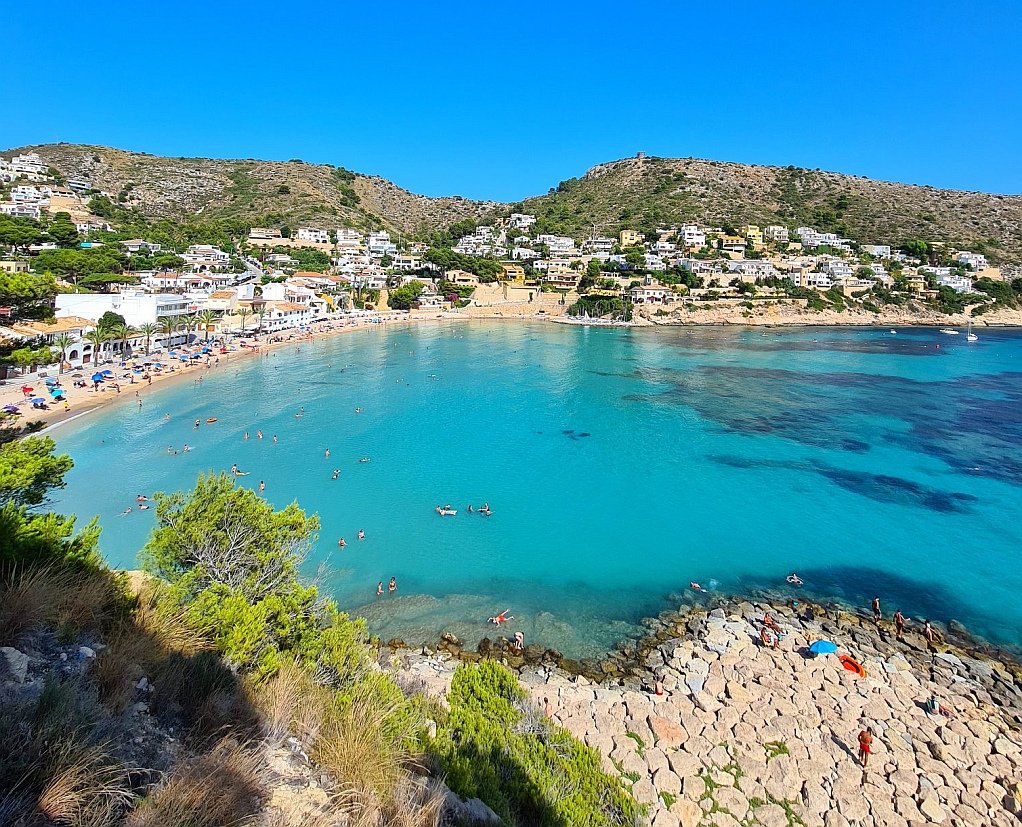
- Nearest Large City: Alicante (≈90 km)
- Transport: Alicante-Elche Airport, N-332 and AP-7 road access
- Overview: Coastal town with marina, beaches, and Mediterranean charm.
- Gastronomy: Paella, fresh seafood, tapas, Mediterranean wines.
- Wildlife & Nature: Dolphins, seabirds, occasional turtles; wild goats and rabbits in nearby hills.
- See the full list of Natural Parks in the Valencian Community (Alicante, Castellón and Valencia) here.
Frequently Asked Questions About Spain’s Lesser-Known Towns and Villages
Many travellers overlook places like Potes in Cantabria, Peratallada in Catalonia, and Alcalá del Júcar in Castilla-La Mancha. These villages combine medieval charm, natural beauty, and authentic local traditions. Each offers a quieter alternative to Spain’s busy tourist hubs, perfect for travellers who prefer history, hiking, and regional food. The full article explores 10 unique destinations in detail.
Villajoyosa offers long sandy beaches, a laid-back atmosphere, and a colourful seafront of painted houses. Unlike its larger neighbours, it has a strong identity shaped by fishing traditions and chocolate-making. The Valor Chocolate Museum is a highlight, but strolling its old town is equally rewarding. It’s a more relaxed choice without sacrificing seaside charm.
Potes is nestled in a valley surrounded by the dramatic peaks of the Picos de Europa National Park. Visitors use it as a base for hiking, wildlife spotting, and exploring mountain villages. The town itself is steeped in medieval character, with stone bridges and towers that give it a timeless feel. Autumn brings especially beautiful scenery.
Alcalá del Júcar in Castilla-La Mancha is famous for its whitewashed cave dwellings built into a cliffside. Some have been renovated into guesthouses, offering a truly unusual overnight stay. Along with its castle, riverside walks, and kayaking routes, it’s a destination that mixes history with outdoor adventure. Full details are in the article.
Babia is a tranquil region of Castilla y León, once celebrated by poets as a place to “be in the clouds.” Today it’s popular with hikers, birdwatchers, and anyone drawn to remote landscapes. Farming traditions remain strong, and local cuisine centres on lamb, cheese, and honey. The area forms part of a protected biosphere reserve.
Cazorla in Jaén is hard to beat. It sits at the edge of the Sierra de Cazorla, Segura y Las Villas Natural Park, one of Spain’s largest protected areas. The town itself has a medieval castle and lively culture, while the park offers waterfalls, olive groves, mountain rivers, and wildlife ranging from ibex to lynx.
I’ve been living in this lovely area of Western Andalucia for the last 20 years or so and dedicate most of my time to the running of English language tourist information websites for the towns of Cádiz, Ronda, Grazalema, the famous or infamous Caminito del Rey, and also Wildside Holidays, which promotes sustainable and eco-friendly businesses running wildlife and walking holidays in Spain. My articles contain affiliate links that will help you reserve a hotel, bus, train or activity in the area. You don’t pay more, but by using them you do support this website. Thankyou!
